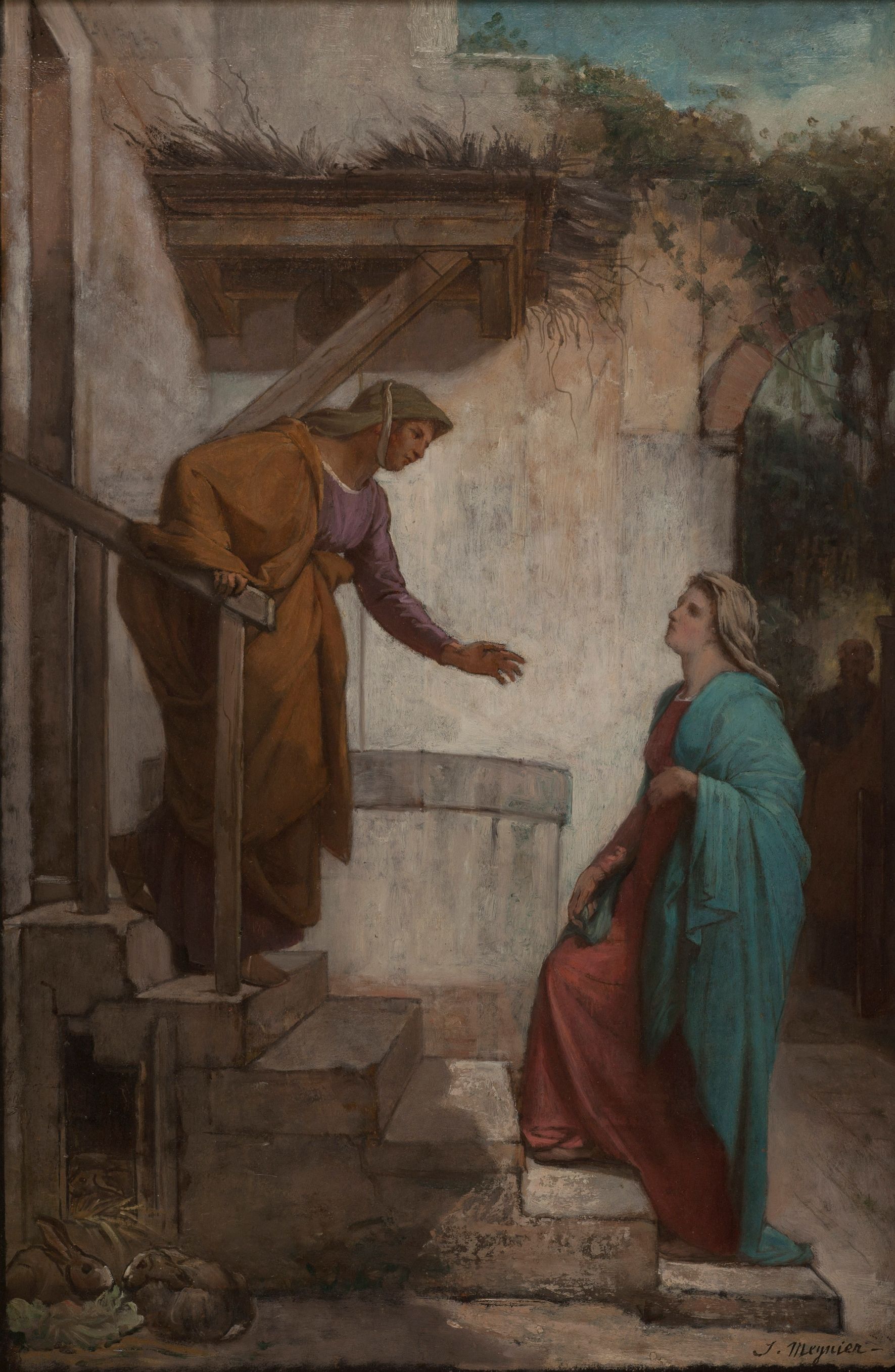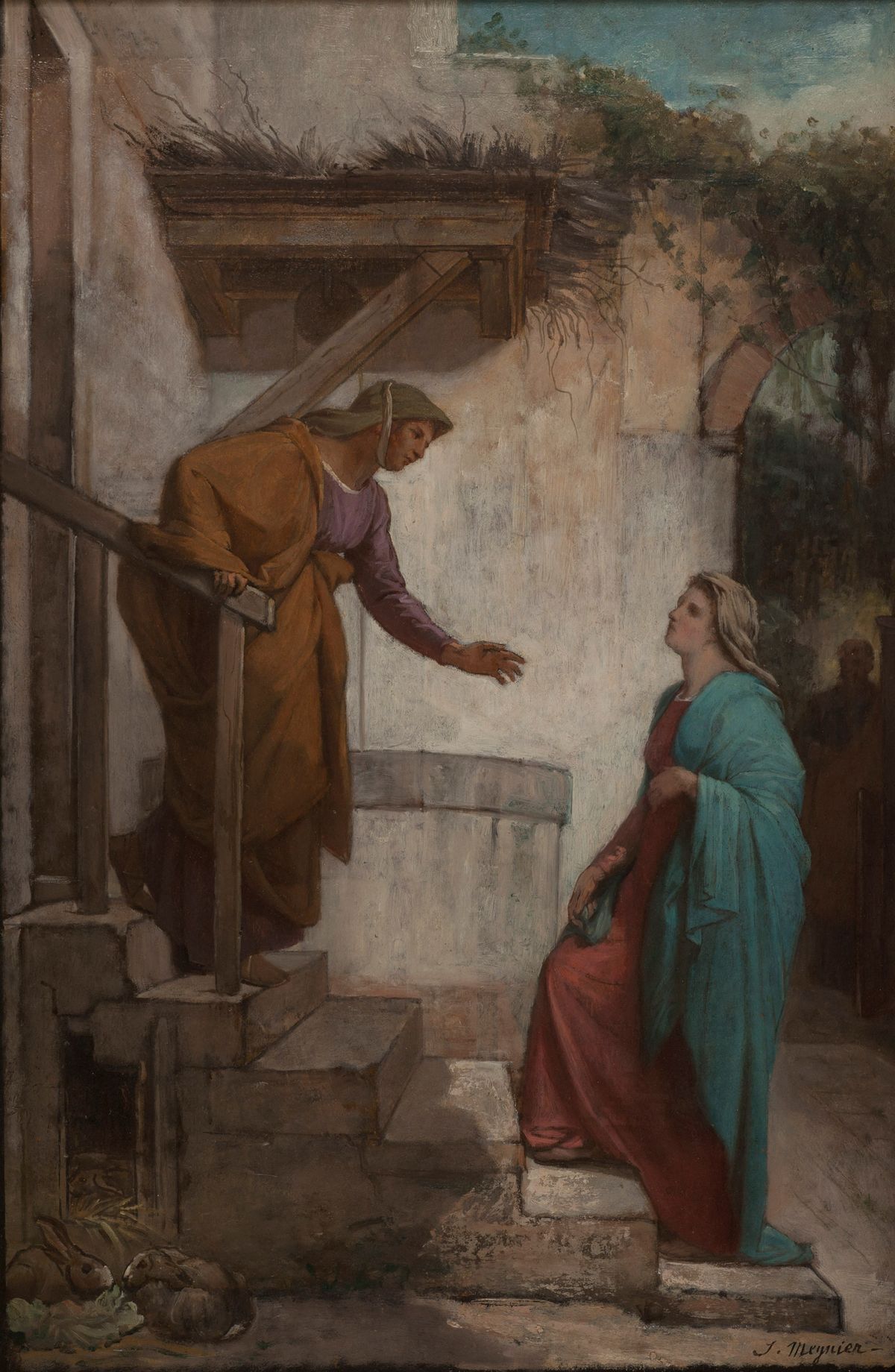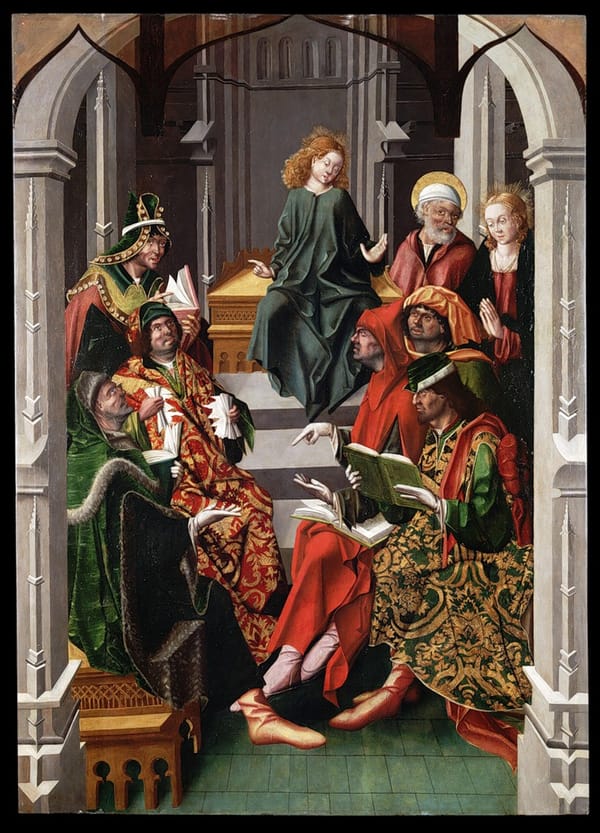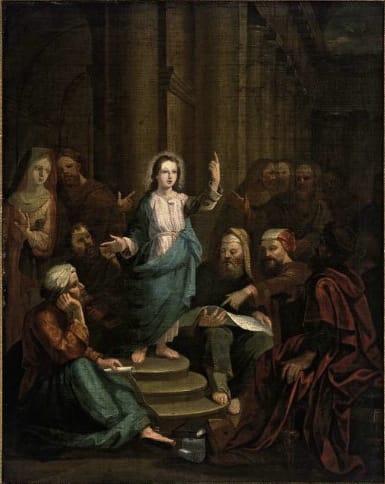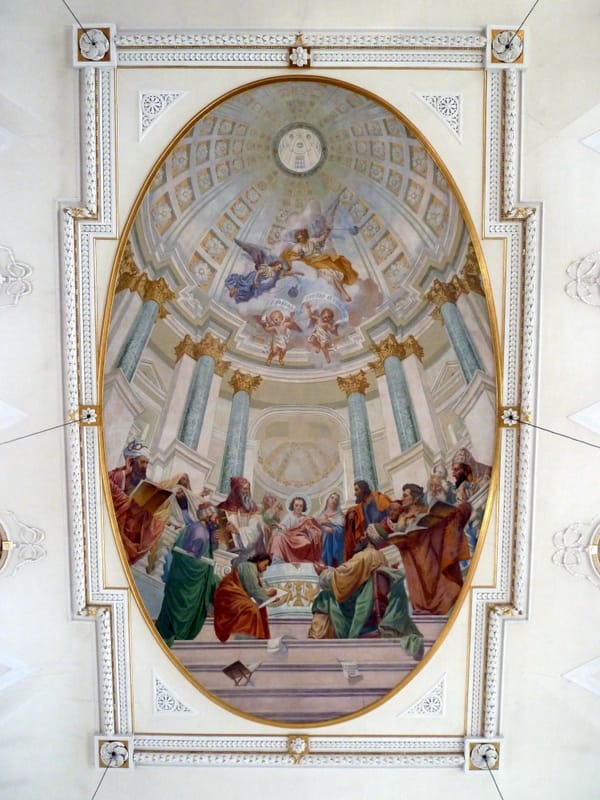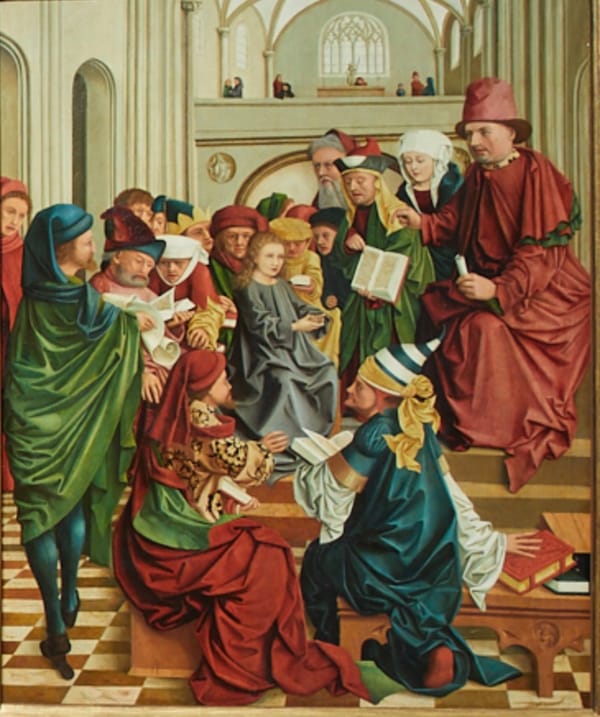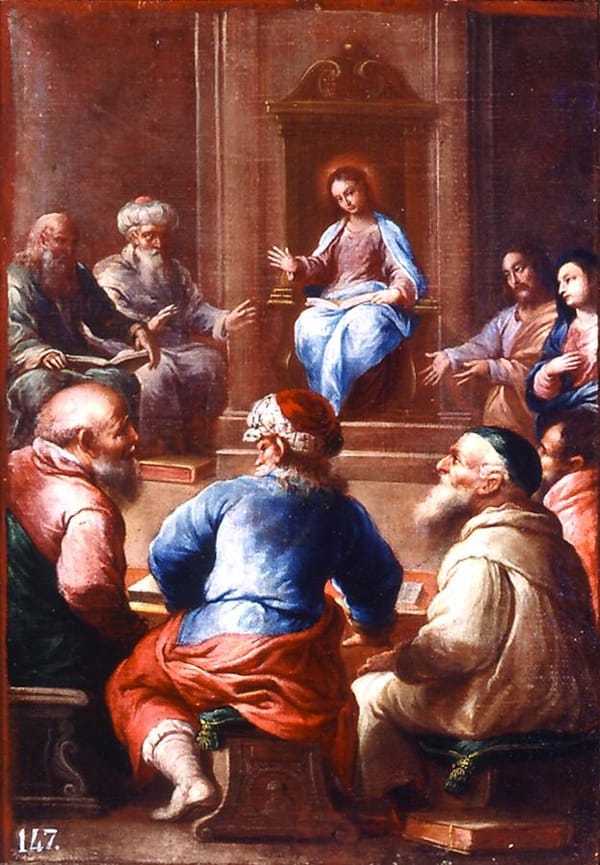Details:
The Visitation depicts the visit of Mary, the mother of Jesus, to her cousin Elizabeth, who was pregnant with John the Baptist. This event is described in the Gospel of Luke, and it is an important moment in the story of Jesus' birth. Mary travels to visit Elizabeth after the Annunciation when the angel Gabriel told Mary that she would give birth to the son of God.
Many French artists of the 19th century created works on this theme, including Jean-François Millet, Gustave Doré, and William-Adolphe Bouguereau. These artists depicted the Visitation in a variety of styles, ranging from traditional to more modern approaches.
Here is a verse from the Gospel of Luke that describes the Visitation:
"In those days Mary arose and went with haste into the hill country, to a town in Judah, and she entered the house of Zechariah and greeted Elizabeth. And when Elizabeth heard the greeting of Mary, the baby leaped in her womb. And Elizabeth was filled with the Holy Spirit, and she exclaimed with a loud cry, 'Blessed are you among women, and blessed is the fruit of your womb! And why is this granted to me that the mother of my Lord should come to me? For behold, when the sound of your greeting came to my ears, the baby in my womb leaped for joy. And blessed is she who believed that there would be a fulfillment of what was spoken to her from the Lord.'" - Luke 1:39-45
The Visitation is a beautiful and meaningful theme in art, and the works from the 19th century that depict this event are sure to inspire and uplift those who view them.
Jules-Joseph Meynier was a French painter born on November 4, 1826, in Paris. He was a student at the Beaux-Arts in Paris, where he studied with Charles Gleyre, Paul Delaroche, and François-Augustin Bridoux. He participated in the Paris Salon from 1853 until his death in 1903. Meynier was awarded a Medal at the Salon in 1867 and a 2nd class medal in 1877. He was known for his historical and genre scenes, portraits, and the wall decorations of the Bourget church in Seine-Saint-Denis.
